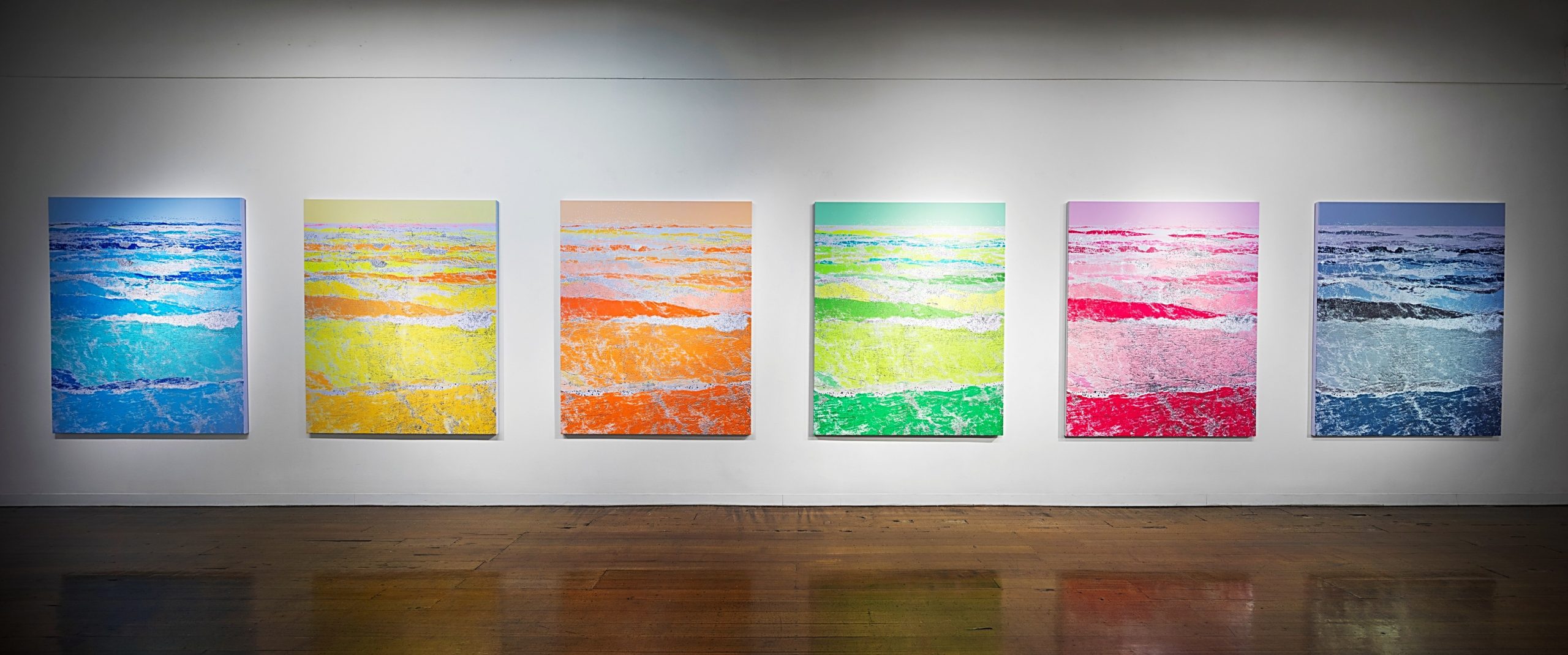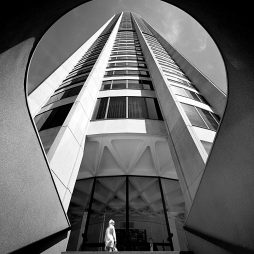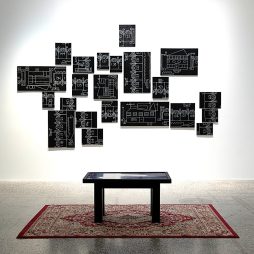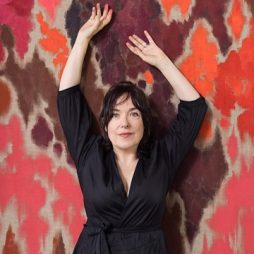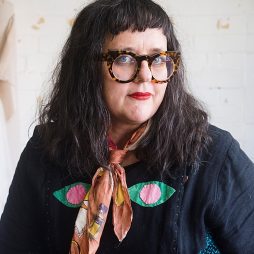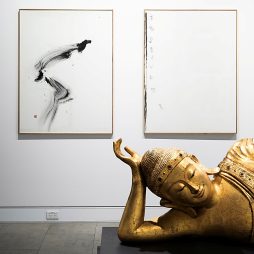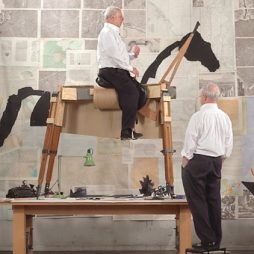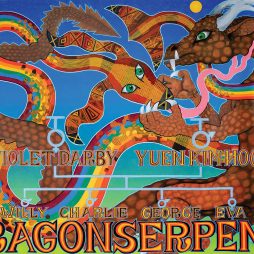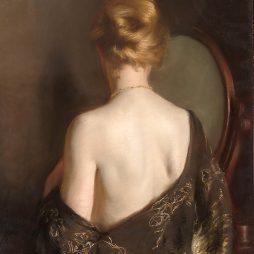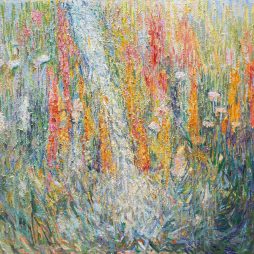REVIEW | Walking Home: Road to Trachoni Kythreas
Walking Home: Road to Trachoni Kythreas meditates on Nike Savvas’s personal family history and intergenerational experience in the fallout of Turkey’s 1974 invasion of Northern Cyprus, which displaced 170,000 Greek Cypriots and is still occupied to this day. The invasion resulted in thousands of dead and missing Greek Cypriots, including three of Savvas’s family members.
To commemorate fifty years since the invasion, Savvas travelled to Cyprus to video her walk from her mother’s home in Kaimakli, Nicosia, to her father’s home village in Trachoni Kythreas. For me, encountering this exhibition had an uncanny quality to it. Ten years ago, I made a very similar pilgrimage to the village of my grandfather’s family, crossing the United Nations patrolled border at Nicosia that divides Cyprus between north and south, and navigating my way by bus to the north-western village of Morphou. I followed directions my mother had given me over the phone, based on her memory of visiting as a twelve-year old, when our family still lived in their homes there. Similarly, in her artist statement, Savvas describes walking through the broken landscape of the village of Agios Sozomenos in the south of Cyprus, encountering bullet-scarred buildings, abandoned since the intercommunal violence in early 1964.
This history is so dense and the cultural rupture so alive, that the immensity of it can be overlooked or deflected by the smooth, contained and finished feeling that Savvas’s artworks first give off. In this sense, Savvas risks producing a superficial encounter with the works on exhibition, comprising paintings, installations and a video, as optical spectacles, rather than layered meditations.
But this exhibition encounter requires patience; not because the work is difficult, but because it takes time to settle into the deeply symbolic and personal meanings that have been distilled within each work—to be able to understand their profound emotional implications, both political and personal. With time, it is the shimmering and shifting qualities produced by the artist’s signature techniques that destabilise the viewer, drawing up through colour, motif and movement, the sorrow, mourning and endurance of all that comes with displacement.
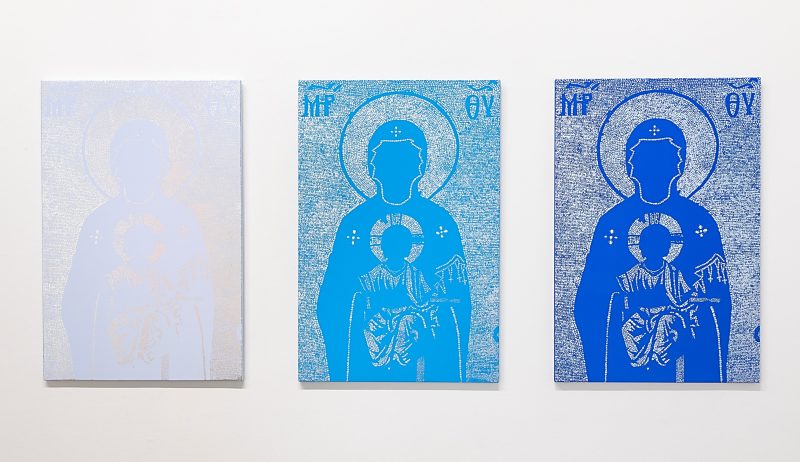
Nike Savvas, Day of the Panayia: 15th August 1974 Trachoni Kythreas, I, ii, iii (installation view), 2025, 84 x 56 x 1.8 cm (each), archival ink, textile foil, polyester canvas, edition of 2 + A/P. Photographed by Andrew Curtis
For Day of the Panayia, 15th August 1974 Trachoni Kythreas, 2025, Savvas has taken the Orthodox image of the Virgin Mary, called Panayia in Greek. The icon symbolises the day of the Panayia in which Turkish troops were responsible for the killing or disappearance of thirty-four of the Trachoni Kythreas residents. Here Savvas recreates an eerie relief: three faceless silhouettes, perhaps to symbolically represent the three missing members of her family, against three tones of mournful blue. The images are constructed with irregular foil squares that evoke Byzantine tesserae, used prolifically in religious art throughout Eastern Orthodox Christianity.
On the opposite wall, the series Every Tear, 2025, comprises six large canvases depicting an ocean-scape, rendered in six different colours. In these different colour grades, offset against shimmering foil, the ocean is evoked as a receptacle of emotion. It is the vast container that the islanders of Cyprus look out upon, and which also looks back at them, awash with the various gradients of feeling. These luminously textured, inky works hold the unmooring sensation of displacement and the stubbornness of resistance, mirroring one’s own salty tears.
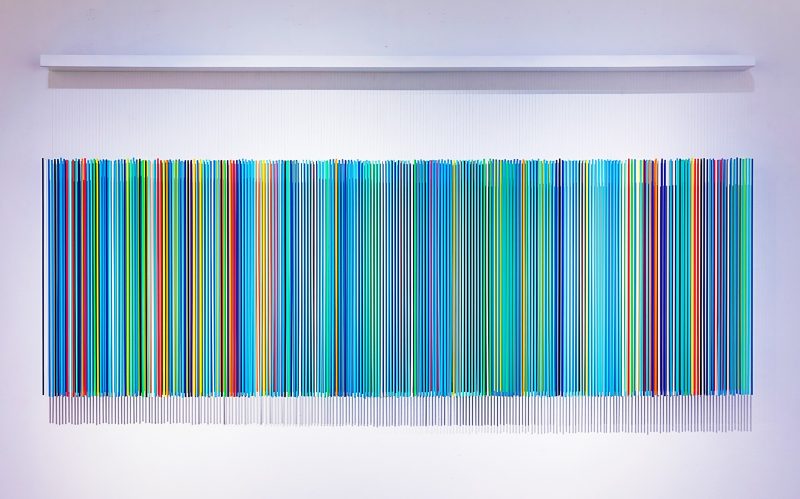
Nike Savvas, Thrinos (Lament) (installation view), 2025, 100 x 300 x 15.5 cm, aluminium, automotive paint, nylon wire, steel bracket. Photographed by Andrew Curtis
The back wall is taken up with the strikingly colourful work Thrinos (Lament), 2025, a kinetic wall painting comprising hundreds of colourful aluminium rods coated with automotive paint and hung with nylon thread to a steel bracket. This work is formally similar to Savvas’ 2022 work Amathous (for Chole), which was also inspired by the autochthonous people of Cyprus, and most obviously references the op art, hard-edged minimalism and chromatic dynamism that she is known for. Described as a “kinetic field of lamentation,” Thrinos creates the sensation that dense experience has been compressed into digestible, comprehensible parts, but when viewed in concert, creates a blurring and disorienting effect, a warping and wobbling of the senses as the bodily motion and prismatic sensation of grief.
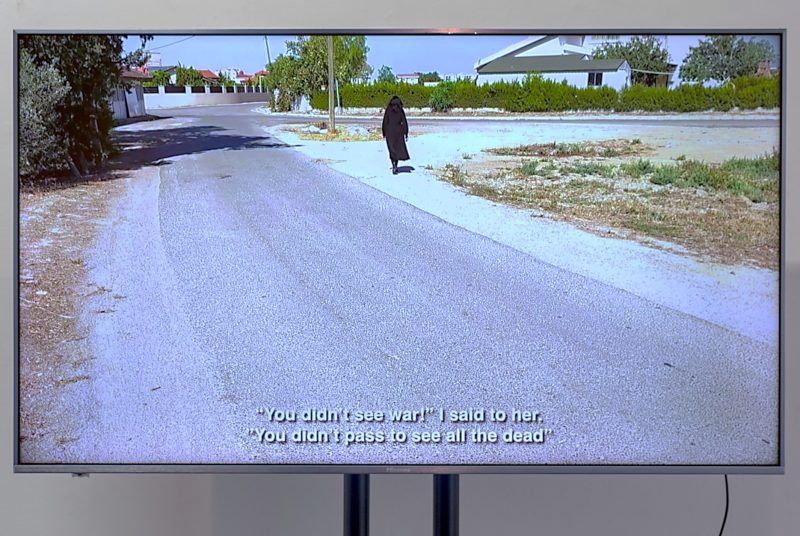
Nike Savvas, Then Xehno / Then Thelo Na Ta Thimame: Never Forget / I don’t want to remember (installation view), 2025, 190 x 320 cm, archival ink, textile foil, polyester canvas. Photographed by Andrew Curtis
Taking the exhibition title, the video work Walking Home: Road to Trachoni Kythreas, July 2024, offers a snapshot of the in-depth archival research Savvas conducted in Cyprus. It also interweaves documentation of Savvas’ journey on foot from one point to another, a moving commemorative service of Greek Cypriots killed by the Greek Junta, and archival footage of the Turkish invasion as well as the Women Walk Home movement—anti-occupation marches conducted by women who bravely attempted to cross the country’s dividing line in 1975, 1987 and 1989. The video gives depth to the exhibition as a whole. Some powerful moments include the mournful shots of Savvas walking slowly through barren, sun-drenched streets dressed in black, evoking the dress of mourning, cut next to energetic footage of women in protest, also walking through the landscape, fifty years ago.
This body of work exemplifies Savvas’s signature style, combining op art, minimalism and colour theory, which she has been honing for almost three decades. But in a departure from the large-scale, colour-saturated, almost mechanical installations she is best known for, this multidisciplinary exhibition offers something quieter, very personal, and resonantly political. To borrow a phrase from Savvas herself, these works offer “the faint pull of transcendence.”
EXHIBITION
Walking Home: Road to Trachoni Kythreas
3–5 December 2025
Art Association of Australia and New Zealand, 2025 Conference, University of Western Australia, Perth
Images courtesy of the artist and ARC ONE Gallery, Melbourne
Roslyn Orlando is an artist, writer and gardener based in Wurundjeri Country Melbourne.
This article first appeared in Artist Profile issue 72

